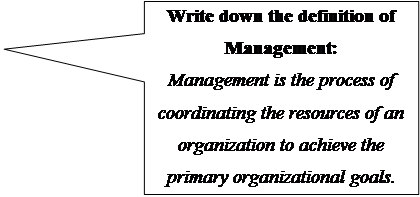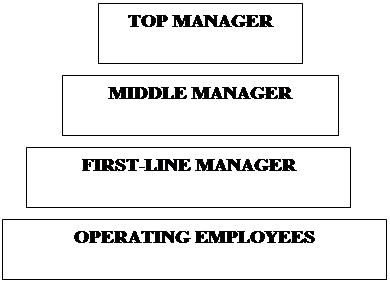Skirts, Dresses, and Skirted Suits
Business formal dress for women can also include a nice, appropriate skirt and an equally formal blouse. Blouses that are too low-cut or reveal your shoulders or back are not suitable for a work environment. When choosing a skirt, make sure that you can sit comfortably in public. Mini skirts, for example, or skirts that are short and tight are inappropriate for the office. Blouses such as dress shirts, sweaters, button-down tops, and turtlenecks are acceptable as long as they look formal and professional. Dresses and skirts that are split at or below the knee are acceptable. Casual shirts, such as t-shirts or tank tops, should be avoided.
Slacks, Pants, and Suit Pants
Slacks and other makers of cotton or synthetic material pants, wool pants, flannel pants, pants that match a suit jacket, and nice looking synthetic pants are acceptable. Inappropriate slacks or pants include any that are too informal. This includes jeans, exercise pants, Bermuda shorts, short shorts, shorts, leggings, and any spandex or other form-fitting pants such as people wear for exercise or biking.
Shoes and Footwear
Conservative athletic or walking shoes, sneakers, boots, flats, shoes on heels, and leather deck-type shoes are acceptable for work. Wearing no stockings is acceptable in warm weather. Flashy athletic shoes, thongs, flip-flops, slippers, and any shoe with an open toe are not acceptable in the office. Closed toe and closed heel shoes are required in the manufacturing operation area.
Hats and Head Covering
Hats are not appropriate in the office. Head Covers that are required for religious purposes or to honor cultural tradition are allowed.
If clothing fails to meet these standards, as determined by the employee’s supervisor and Human Resources staff, the employee will be asked not to wear the inappropriate item to work again. If the problem persists, the employee may be sent home to change clothes and will receive a verbal warning for the first offense.

A team of professionally, formally dressed co-workers certainly does look sharp. Wearing attire that fulfills a company's business formal dress code is necessary for employees because it projects the image of a trustworthy, knowledgeable business person who is ready to serve their clients successfully. When a company is offering great services and employs hard-working and able people, it is important that their attitude is reflected in their dress, as well.
7.1. Answer the questions:
1.What is a work dress code? Give the definition. 2. Why do many companies
use a work dress code? 3. What is the standard of dressing for men in a formal business environment? 4. What rules of work dressing should women observe? 5.Are fashion brand names on clothing generally acceptable? 6. May all skirts and dresses be worn in the office? 7. What materials are acceptable for working in business sphere? 8. What kinds of slacks or pants are inappropriate for working in the office? 9. What footwear is acceptable for work? 10. When are women allowed wearing no stockings? 11. What types of shoes are required in the manufacturing operation area? Why? 12. In what case are head covers allowed at work? 13. What will happen if an employee breaks the rules of a work dress code? 14. Why is a business formal dress code so necessary for employees? 15. What is your attitude to the rules of a work dress code? Would you like to add any?
7.2. Agree or disagree with the statements. Prove your opinion:
1.Employees should project a professional image for customers, potential
employees, and community visitors. 2. Any clothing that has words, terms, or pictures is unacceptable. 3. Clothing that works well for the beach, yard work, dance clubs, exercise sessions, and sports contests may be appropriate for work on Saturday. 4. Mini-skirts are acceptable while applying for a job. 5. Any footwear which is comfortable to wear is acceptable to working in the office. 6. Head Covers that are required for religious purposes or to honor cultural tradition are allowed only in the countries with similar traditions. 7. When a company is offering great services and employs hard-working and able people, it is important that their attitude is reflected in their dress, as well.
7.3. Retell the text “Dress code”.
8. Today is your first working day. Look at the picture and enumerate things of clothes in English. Choose the clothes which you are going to wear. You may start your sentence with “I’m going to wear … because…”, “…is inappropriate for wearing in the office because…”.

9. Make up a dialogue: a job-seeker meets with the head of a company to apply for a job. The boss may encourage or criticize the appearance of a job-seeker.
Unit Two
Management

1. What words according to your opinion are associated with the theme “Management”? “Put” them into your case. One is already there:

2. Read the new words and add them to your dictionary:
| to be based on | основываться (на) |
| scientific theories | научные теории |
| division | разделение, распределение |
| subordinate | подчиненный |
| to delegate responsibilities | распределять обязанности |
| management by exception | управление по отклонениям |
| handle | управлять |
| manufacturing | производство |
| engineering | строительство |
| accounting | бухгалтерский учет |
| personnel | персонал |
| management committee | административный комитет |
| budgeting | финансовое планирование |
| to report to | докладывать кому-либо |
| affair | дело |
| profitable прибыльный | |
| unit price | цена за единицу товара |
3. Translate into Russian:personnel, to report, to rely on budgeting, scientific
theories, delegating responsibility, management by exception, company’s affairs, manufacturing, engineering, accounting, to be responsible for, management committee, profit; the unit price.
4. Translate into English:финансовое планирование, бухгалтерский учет, докладывать,
прибыльное дело, цена, персонал, производство, научный, административный комитет, подчиненный, строительство, основываться, теория, управлять, распределение, дела компании.
5. Put the letters in the right order:nprsonele, ubdignget, fairaf, pexcionet, tisirliesponbesi, itcomteem, aaeennmmgt, fiecsitinc, dhnlea.
6. Match the words to make up word-expressions:
delegating theories
management price
unit committee
scientific by exception
management responsibilities
7. Read the following text and do the tasks:
Management
Management is based on scientific theories and today it is a developing science. Each department in the Marketing Division has a manager who also has subordinates, who are expected to do the jobs that are delegated to them. When something unexpected happens or when something goes wrong, subordinates are expected to let the manager know. This kind of management is also known as management by exception. The products which are sold more or less than expected are the exceptions. Managers want to know about and help to solve problems.
Delegating responsibilities and helping subordinates handle exceptions are only a part of a job of a director of marketing. A big part of his job lies in working with managers or directors of other divisions in the company. Other important jobs or divisions are manufacturing, engineering, finance, accounting, distribution, administration, and personnel. The division directors report to the president the same way that department managers report to them. The directors are subordinates of the president. Directors, or managers, have to let the president know if there are exceptions in the things they are responsible for.
So delegating responsibility is a part of the job of every director and manager. To help delegate responsibilities the president meets with all the division directors. This group is called the management committee. Each department in a division of a company relies on budgeting to make the company’s affairs profitable. A profit target is set, and the unit price of the goods (which depends on how much they cost to make and for how much can be sold) is determined by this; the managers report how well this target has been met; the price of the goods leaving the factory (or ex-works) is adjusted.
What is important to an organization is not the number of managers it employs but the ability of these managers to achieve the organization’s goals, and this ability requires great skills.
7.1. 

7.2. Write down the main resources of an organization:
|

|
7.3. Answer the questions to the text:
1. What does it mean when a manager delegates responsibilities?
2. How does management by exception work?
3. What is the management committee?
4. What is the job of the management committee?
5. What is the main point in the organization’s work?
7.4. Complete each sentence with the correct word:
1. The job of a manager is not to worry about problems but about how to -------- them.
2. Subordinates accept responsibilities delegated by ---------.
3. ---------- are subordinates of the president.
4. A manager delegates responsibilities to ---------.
7.5. Write a complete sentence about each of the following:
1. exception. 2. delegation. 3. responsibility 4. Subordinate
7.6. Translate the sentences into English:
1. Менеджмент основан на научных теориях. 2. Менеджмент – это процесс
координации ресурсов организации для достижения организационных целей.
3. Менеджеры занимаются четырьмя видами ресурсов: материальными, финансовыми, людскими и информационными. 4. Наиболее важными ресурсами организации являются ее людские ресурсы. 5.У каждого менеджера есть свои подчиненные, которые, в свою очередь, имеют свои обязанности. 6. Если случаются непредвиденные ситуации, подчиненные должны оповестить своего управляющего.7. Директор встречается с комитетом управления для того, чтобы распределить обязанности. 8. Прибыль компании зависит от правильного составления бюджета.
8. Each organization can be represented as a pyramid. Look at the scheme: there are three general levels of management: top managers, middle managers, and first-line managers. At the basic level of this pyramid there are operating employees.


9. Before reading about levels and areas of management read the new words and keep them in mind:
| a pyramid | пирамида | to supervise | управлять |
| top manager | главный управляющий, топ-менеджер | to determine | определять |
| middle manager | менеджер среднего звена | strategy | стратегия |
| first-line manager | менеджер первого звена | major | основной |
| operating employees | работники-исполнители | policy | политика |
| upper-level | руководящий | salaries месячная | заработная плата |
| executive | исполнитель | wages почасовая | заработная плата |
| overall activities | общая деятельность | work force | рабочая сила |
| vice president | вице-президент | research and development | научно-исследовательские работы |
| chief executive officer (CEO) | главный исполнительный директор | to convert | превращать, преобразовывать |
| member of the Board | член Совета директоров | to be in charge of | отвечать (за) |
| to implement | выполнять, осуществлять | to provide | снабжать |
| division manager | руководитель подразделения | leadership | руководство |
| department head | начальник отдела | financial manager | управляющий финансами |
| plant manager | директор завода | human resources manager | начальник отдела кадров |
| operations manager | директор-распорядитель |
10. Translate the words and word combinations into Russian:a
pyramid;anupper-levelexecutive; to determine the firm's strategy; CEO; to implement the major policies; to supervise the activities of operating employees; human resources manager,to get salaries or wages; work force of the organization; research and development; to convert resources into goods and services; to be in charge of; exchange of products; promotion; to provide overall activities, financial manager,leadership.
11. Translate the words and word combinations into English:снабжать,
начальник отдела, почасовая заработная плата, осуществлять общую деятельность компании, начальник отдела кадров, преобразовывать, управляющий финансами, директор завода, работники-исполнители, основная стратегия, руководство, рабочая сила, главный исполнительный директор, менеджер среднего звена, отвечать за, вице-президент, научно-исследовательские работы, руководящий, политика, месячная заработная плата, директор-распорядитель.
12. Read and translate the texts about levels and areas of management:
Levels of Management
A top manageris an upper-level executive who guides and controls the overall activities of the organization. Top managers constitute a small group. They are generally responsible for the organization's planning and developing its mission. They also determine the firm's strategy and its major policies. It takes years of hard work as well as talent and good luck, to reach the ranks of top managers. They are president, vice president, chief executive officer, and member of the Board.
A middle manageris a manager who implements the strategy and major policies handed down from the top level of the organization. Middle managers develop tactical plans, policies, and standard operating procedures, and they coordinate and supervise the activities of first-line managers. Titles at the middle-management level include division manager, department head, plant manager, and operations manager.
A first-line manageris a manager who coordinates and supervises the activities of operating employees. First-line managers spend most of their time working with employees, answering questions, and solving day-to-day problems. Most first-line managers are former operating employees who, owing to their hard work and potential, were promoted into management. Many of today's middle and top managers began their careers on this first management level. Common titles for first-line managers include office manager, supervisor foreman and project manager.
Operating employees are not managers. They are qualified and non-qualified persons working for the organization. For their labour or services they get salaries or wages. They represent the work force of the organization.
Areas of Management
An organizational structure can also be divided into areas of management. The most common areas are finance, operations, marketing, human resources, and administration. Depending on its purpose and mission, an organization may include other areas as well — research and development, for example, or risk management.
|
A financial manageris primarily responsible for the organization's financial resources. Accounting and investment are specialized areas within financial management. Because financing affects the operation of the entire firm, many of the presidents of the largest companies are people who got their “basic training” as financial managers.
An operations managercreates and manages the systems that convert resources into goods and services. Like financial management, operations management has produced a good percentage of today's company presidents.
A marketing manageris responsible for the exchange of products between the organization and its customers' or clients. Specific areas within marketing are marketing research, advertising, promotion, sales, and distribution.
A human resources manageris in charge of the organization's human resources programs. He or she engages in human resources planning, design systems for hiring, training, and appraising the performance of employees. An administrative manager(also called a general manager) is not associated with any specific functional area but provides overall administrative leadership. A hospital administrator is a good example of an administrative manager. He or she does not specialize in operations, finance, marketing, or human resources management but instead coordinates the activities of specialized managers in all these areas.
12.1. Translate the sentences into English:
1. Существует три основных уровня управления (менеджмента): высший менеджмент, менеджмент среднего звена и менеджмент первого звена.
2. Высшие менеджеры направляют и контролируют общую деятельность организации, они определяют стратегию и основную политику фирмы.
3. Высшими менеджерами организации являются президент, вице-президент, главный исполнительный директор и члены совета директоров (правления). 4. Менеджер среднего звена реализует (осуществляет) стратегию и основную политику, спускаемые с верхнего уровня организации. 5. Средними менеджерами организации являются руководитель подразделения, начальник отдела, директор завода и директор производства. 6. Менеджер первого звена следит за деятельностью неуправленческих служащих и координирует ее.
7. Менеджерами первого звена являются инспектор, мастер, руководитель отдела, руководитель проекта. 8. Менеджеры первого звена работают с неуправленческими работниками и решают повседневные проблемы.
9. Неуправленческие работники представляют основную рабочую силу организации. 10. Самыми обычными сферами управления являются финансы, производственные операции, маркетинг, людские ресурсы и администрирование. 11.Заведующий финансами прежде всего отвечает за финансовые ресурсы организации. 12. Традиционно директор производства ассоциируется с производством товаров. 13. Однако в последние годы управление производством относится к производству товаров и услуг.
14. Управляющий маркетингом ответственен за обмен продукцией между организацией и ее постоянными покупателями или клиентами.
13.


Read the names of skills which a good manager should master:
